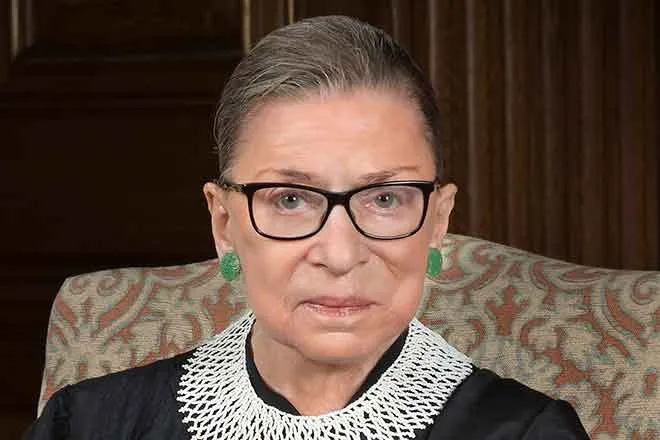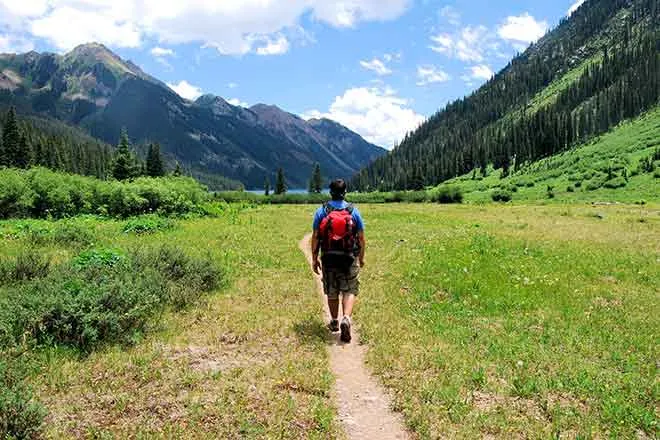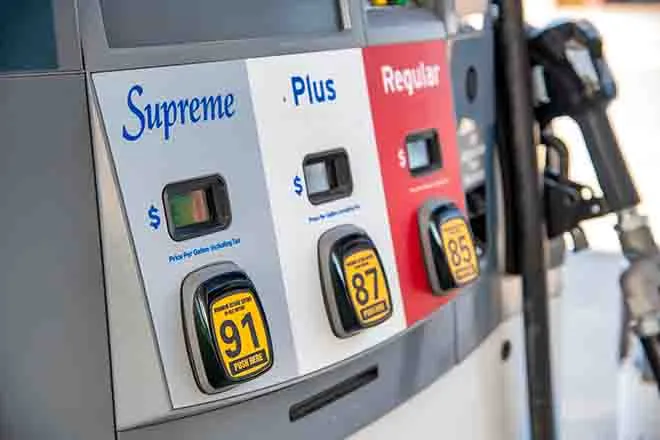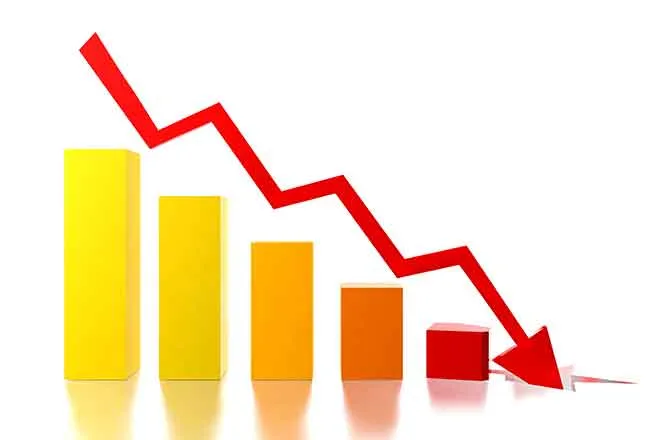
Colorado's clean energy goals hinge on skilled workforce
(Colorado News Connection) "Colorado's a very forward-looking state. We like to lean into trends to have the good jobs of tomorrow rather than the good jobs of yesterday."
Governor Jared Polis sees that future in a green economy. "That aligns well with our forward-looking vision on air quality and climate to make sure that Colorado is a leader in the clean energy revolution as well as a leader in employment."
Colorado has been leading the way in the green economy for more than a decade and it doesn't look like it's slowing down anytime soon.
The state already has the third-largest green workforce in the country and, according to research by Emsi Burning Glass for our Green Jobs Now: Colorado report released today, there are close to 30,000 people working in the green sector - those both directly and indirectly doing jobs that impact the environment.
Core green jobs have experienced a steady increase each year over the last four years, with little impact during the pandemic. Green enabled jobs are by far the most in-demand in Colorado. While 2020 saw a dip in demand for green enabled jobs, demand rebounded in 2021, and surpassed the levels seen since 2018.
While the number still represents a small percentage of the overall workforce, it continues to grow as the demand grows for workers with green skills in the state and across the rest of the country. Last year alone, there were more than 12,000 new green job openings in Colorado. By comparison, this is more than the number of job postings for nursing assistants and security officers.
Over half of the green job openings in 2021 were in the Denver area alone, according to the report. This concentration of 7,880 green openings is both impressive, and suggests that Denver, along with the rest of Colorado, is a state leaning into the green economy.
Having green skills has a paycheck payoff. For example, according to our report, workers with skills related to carbon reduction and energy efficiency make, on average, more than $4,000 a year more than someone without those skills.
Renewable Energy: Leading Job Growth Now and in the Future
At present, the most in-demand skills related to the green economy in Colorado are in renewable energy, energy efficiency, and energy conservation. The top in-demand occupations amongst core green jobs focus heavily on energy production by means of solar and wind.
We see all phases of green energy research, manufacturing, sales, installation, and upkeep within those top core green occupations.
And that's just the beginning, according to the WorkingNation report. The number of green jobs is expected to grow by 10.33 percent over the next five years, well above the national average of 5.7 percent projected growth. A lot of that growth is expected in green energy.
"We'll be at 80 percent renewable energy in just eight years. And I ran on the goal of 100 percent renewable energy by 2040 for the grid, so that leaves us that second decade - 2030 to 2040 - to bridge that additional 20 percent," Polis tells me.
He says he's confident that if any state can reach that goal, it will be Colorado. "(We) check the boxes for really the best place to locate a clean energy company, including leading the way on cutting edge developments of the workforce and adapting our apprenticeship and community college system to meet those needs," he adds.
The state is getting support in building its green workforce from both the public and private sectors.
Filling the Demand for Green Workers in Construction and Other Fields
Renewable energy is not the only in-demand field in the state. Thanks to the Infrastructure and Jobs Act, says Polis, the state will be able to build what he describes as "a dynamic 21st century transportation system that will save Coloradans time and money." The federal funds are earmarked for road repair and an EV charging infrastructure.
Economic growth in Colorado over the past two decades has already fueled the overall demand for construction workers. The industry workforce is about 175,000 strong right now and the need for skilled workers in the field is expected to grow to around 220,000 by 2027. And that forecast may be modest - it was made before the Infrastructure bill was approved.
To meet the demand for construction workers, whether it is on the roadside or in commercial and residential buildings, the Construction Education Foundation (CEF) runs a number of workforce development programs, including registered trade apprenticeships in all types of construction jobs and now a P-Tech high school training program tied to an associate degree.
These P-Tech students will sign up in 10th grade after they complete a Careers in Construction Program in which they earn state- and nationally-recognized Home Builders Institute (HBI) certificates in carpentry, electrical, HVAC, plumbing, and more.
"HBI also has a solar stackable credential in partnership with the Interstate Renewable Energy Council. They are taking that solar expertise to the high school program," explains CEF executive director Bryan Cook.
Cook adds that Colorado has always been proactive when it comes to the green economy. "A lot of our codes have been changed to bring in that green-build LEED platinum certification. It's already part of the construction industry."
He says the demand is so great that CEF will continue to add training programs and new partners. "It is a priority for the city and county of Denver. It's a priority for our state. We have to educate these students because this is our future. They're in school now and within three years they'll be running these projects that are building our state."
Shannon Jahn is the green workforce liaison for the city and county of Denver, working through the Climate Action, Sustainability, and Resiliency office. "Our vision is to really create career pathways and opportunities for individuals from under-resourced communities so that we're enabling a just transition to support climate resiliency and a sustainable Denver."
She says the office is working with a number of programs to fill the demand, some focusing on youth and others on adult upskilling and new skilling.
"The Community College of Denver's WorkNow program has been a staple in our community, training individuals in the construction field and, with our funds, we're helping them stand up a green construction lens," Jahn explains. She says the program already has more than 20 industry partners and is about to undertake a new green-focused, work-based learning program. "This will have that clean energy and green building pathway lens. They'll have building inspection and maintenance certification and credentials upon completion of these programs."
The International Facilities Management Association - in partnership with Goodwill of Colorado - has started a training program for adults in underrepresented communities. "Not only will these individuals be able to identify how well their facilities are running, or not, they will also be set up for a pre-apprenticeship program that will run into an apprenticeship program that gets them paid on-the-job training over the course of two years," Jahn says.
For the past 30 years, Mile High Youth Corps (MHYC) has offered educational and paid service opportunities to create green career pathways for young adults aged 18-24 in two dozen Colorado counties. They are a part of building the workforce of the future.
"They're going to train youth in energy and water conservation programming and the certifications that these youth are going to walk away with will have Department of Energy and Department of Labor credentials attached, so that they should have the ability to walk up to an employer and provide some of these micro-credentials to get them established in the field," explains Jahn.
The effort has also hit the Denver Public School system. The district is planning a career exploration program that will introduce high school students to green energy career paths, giving them tours of clean energy opportunities in person or virtually.
"They also plan on creating a summer renewable energy academy so that they're attaching industry members and opportunities for internship or mentorship every summer for these youth. The very first one, they're hoping to partner with the African-American Trades Association. These youth are getting examples of what the day-to-day looks like in the trades, but also with the lens of clean energy or green jobs," Jahn adds.
Now Hiring Green in Steel City
Take a two-hour drive south of Denver and you will find yourself in Pueblo, nicknamed "Steel City" more than a century ago when it was one of the nation's largest steel-making cities. It is still a steel-making city and it's about to add another steel mill that will manufacture rails for the country's train system, generating more than 1,200 new jobs. And those jobs will be green jobs.
David Ferryman is the SVP of the Pueblo business unit for EVRAZ North America. "The steel that we're making is not only more green than traditional steel-making, which our foreign counterparts make, but it also helps with reducing landfill and waste components because we're taking old cars, old washing machines, old steel products, melting it down, and making something new. The cool thing about steel is that it's endlessly recyclable. We can take that steel and recycle it over and over again, without it losing much quality."
The company is 150 years old this year and has gone through a couple of ownership changes during its long history. Originally the mill used a traditional blast furnace, but it was converted in the 1970s over to a more green process. "We use an electric arc furnace, which is different than most of the world," explains Ferryman.
"An EAF essentially takes old steel scrap as its primary raw material. And we use big graphite electrodes to melt down that steel to make a new steel product. That process reduces carbon or GHG emissions by up to 75 percent."
140 years ago, EVRAZ produced its first steel stick rail out of the current Pueblo mill. The new mill is about 30 percent completed. When it's done, it will be a state-of-the-art facility making 320-foot rails, four times the size of the ones they make now. "There are about 800 construction jobs associated with the project and will add about 300 new jobs to support our existing operations as well as to get this new mill up and running," he says.
Most of the jobs relate directly to the production of steel and steel products. The company will be hiring both entry level and skilled workers and is working with the community to fill those jobs. "We do need experienced automation engineers, millwrights, and electricians. We also work with the local high schools. We work with Pueblo Community College - we are gearing up to start an apprenticeship training program at PCC later this year. We also hire management, metallurgists, and engineers from Colorado School of Mines," Ferryman explains.
There's one more green aspect to the company's Pueblo footprint and it involves renewable energy. Making steel consumes a lot of electricity. EVRAZ North America is about to have the world's first steel mills to be mostly powered by solar energy. The company has partnered with Xcel Energy and Lightsource BP to build a 300-megawatt Bighorn Solar Project made up of 750 solar panels on 1,600 acres of land in Pueblo. "Electricity is vital to our operation, so we were really looking for sustainable energy at more affordable pricing. The solar plant is capable of feeding the electrical grid to compensate for about 90 percent of what we're consuming daily."
The Intersection Between the Environment and the Economy
Polis credits Bill Ritter, former governor, for bringing Colorado's vision of a clean energy future that could generate green jobs into focus. It's a mission he continues to champion to this day.
Ritter served as the state's chief executive from 2007 to 2011 and he founded the Center for the New Energy Economy (CNEE) at Colorado State University in Fort Collins after leaving office. CNEE works directly with governors, legislators, regulators, utilities, and other stakeholders to provide technical and strategic assistance, advancing clean energy public policy at the federal, state, and local levels of government.
He says a lot of the early conversation around renewable energy was about climate change only, but there's been a massive shift in how people are looking at the subject. "I think the conversation has become far more about economics and about job growth. And it happens to complement our need to ensure that we're reducing our greenhouse gas emissions."
Ritter believes the transition to more renewable energy sources will grow decisively over the next couple of decades and that creates economic opportunity. "There is this way to make this conversation about energy, about the environment, about the economy, and about equity. If we do this the right way, we can ensure that we will have an equitable economic energy transition."
Equity is at the forefront of a lot of these conversations. "Let's ensure that we're thinking about this from a justice perspective, meaning who do we employ? Where does that workforce come from? Where do we create wealth and what communities are we focusing on to ensure we're creating wealth in those communities?" Ritter asks.
He adds that the green job growth over the coming years won't just be around renewable energy. "In order for us to transition to a clean economy, the transportation sector which has now eclipsed the power sector as the greatest emitting sector that we have in the United States, that's going to have to be clean, right? We're going to see this massive build out of electric vehicles, but also of charging stations."
According to Ritter, "A lot of these green jobs, interestingly, are going to be in software development. Imagine if you're a major freight company and you have 18,000 over-the-road trucks. Somebody's going to invent the platform - and probably already has - to allow you to know where every one of those 18,000 trucks are going to be charged when they're having downtime in the late evening when the driver's resting."
He says it's also important to look at the transportation sector even more broadly. "A lot of people think about transportation policy and they think very narrowly about how do we transition to EVs or maybe hydrogen fuel cells. When in fact, it's really about what we call transit-oriented development. Where do people live? How are we building out developments? That has its own relationship back to jobs and workforce creation."
Polis agrees. "It's hard to have a discussion about climate and about transportation without also including housing in that equation. We have as a state goal ensuring that more people can afford to live close to where their jobs are. And that means taking a look at things like zoning and transit quarters to help make sure that people can afford to live in communities that they work in."
The governor says Colorado's focus on the environment and green jobs makes it a good place to live and work. "Colorado is really not only a thought leader in the renewable energy area with major federal research labs, major research universities, an important ecosystem of innovation, but we also have 300 days of sunshine and great wind and great geothermal characteristics."
He concludes, "It's the alignment of these things - the general workforce trends in our forward-looking approach to skills-based hiring in the workforce, along with the most successful ecosystem in the nation around clean energy, innovation, and employment."
That bigger picture is important, says Paula DiPerna, our WorkingNation consultant on the green economy and a special advisor to CDP.
"It took a hundred years to build up the carbon problem. The goal of the Paris Agreement - the international treaty on climate change - is to delink truly delink economic growth from emissions growth. It can't be a pendulum swinging back and forth. It's an actual rebuilding process. You need consistency."
DiPerna believes Colorado has shown that consistency borne out of a strong connection between the environment and the economy. "They come to it with an appreciation of the great outdoors. In Colorado, people come from all walks of life with a preexisting mindset of the value of nature - the open spaces mentality - and that's what you could call a catapult for the state of Colorado to merge its planning policies," she says. "It's not a marginal thing - a kind of nice thing to have - it's a big economic driver."
WorkingNation producer Deidra White contributed to the reporting in this article.
Ramona Schindelheim wrote this story for WorkingNation. Support for this reporting was provided by Lumina Foundation.
















